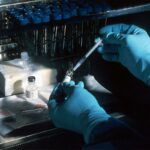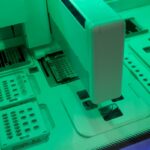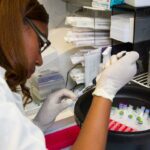DNA evidence has revolutionized the legal landscape, providing a powerful tool that can conclusively link a suspect to a crime scene or exonerate an innocent person. Its importance in legal cases cannot be overstated, as it often serves as the most compelling piece of evidence in a trial. However, the question remains: How often is DNA wrong? This article aims to explore the accuracy of DNA evidence, the instances when it can be incorrect, and the future of DNA in forensic science.
Understanding DNA Evidence
DNA, or deoxyribonucleic acid, is the genetic material that makes up all living organisms. It carries the unique genetic code that determines our physical characteristics and biological functions. In the context of legal cases, DNA evidence refers to the use of this genetic material to identify individuals involved in a crime. This identification process is based on the fact that, except for identical twins, no two people have the same DNA.
The use of DNA as evidence in court has become a cornerstone of modern forensic science. DNA evidence can be obtained from various sources at a crime scene, including blood, hair, skin cells, and other bodily fluids. Once collected, the DNA is analyzed and compared to the DNA of potential suspects. If there’s a match, it can be a powerful piece of evidence pointing towards the guilt of a suspect.
The Accuracy of DNA Evidence
DNA evidence is often touted as being 99% accurate, but what does this mean? Essentially, it means that the chance of two unrelated individuals having the same DNA profile is less than one in a billion. This high accuracy rate is due to the unique nature of DNA and the advanced techniques used in its analysis.
Several factors contribute to the high accuracy of DNA evidence. First, the human genome is vast, with about 3 billion base pairs of DNA. The sections of DNA used for forensic analysis, known as loci, are carefully chosen because they are highly variable among individuals. Second, modern DNA analysis techniques are incredibly sensitive and can generate a profile from just a few cells.
Unique Nature of DNA
The uniqueness of DNA is a key factor in its use as evidence in court. As mentioned earlier, no two people have the same DNA, with the exception of identical twins. This means that a DNA match between evidence from a crime scene and a suspect is highly indicative of that person’s involvement in the crime.
This uniqueness has significant implications in court cases. It allows for definitive identification of suspects, reducing the reliance on less reliable forms of evidence such as eyewitness testimony. However, it also means that a mistake in the handling or analysis of DNA evidence can have serious consequences.
Instances When DNA Evidence Can Be Wrong
Despite its high accuracy rate, DNA evidence is not infallible. The 1% error rate in DNA evidence refers to the potential for mistakes in the collection, handling, and analysis of the DNA. These errors can lead to false matches or the misinterpretation of the evidence.
There have been several high-profile cases where DNA evidence has been proven wrong. For instance, in the case of Amanda Knox, an American student accused of murder in Italy, DNA evidence initially played a key role in her conviction. However, it was later revealed that the DNA evidence had been contaminated, leading to a false match.
Human Error as a Major Contributor to DNA Mistakes
Human error is a significant contributor to mistakes in DNA evidence. This can occur at any stage of the process, from the collection of the evidence at the crime scene to the analysis in the lab. For example, contamination can occur if the evidence is not properly handled or stored. Similarly, errors in the lab can lead to incorrect results.
In the case of the Central Park Five, a group of teenagers wrongfully convicted of assault and rape in New York, human error in the interpretation of the DNA evidence was a key factor in their conviction. The DNA evidence was misinterpreted, leading to a false match and their subsequent conviction.
Consequences of Wrong DNA Evidence
The impact of wrong DNA evidence on court cases can be devastating. It can lead to the wrongful conviction of innocent people, as seen in the cases of Amanda Knox and the Central Park Five. Moreover, it can also undermine public trust in the justice system and the science of forensic DNA analysis.
For those wrongfully convicted, the consequences can be life-altering. They may spend years, even decades, in prison for crimes they did not commit. Even after exoneration, they may struggle to rebuild their lives due to the stigma of a criminal conviction.
Measures to Minimize Errors in DNA Evidence
Given the potential consequences of wrong DNA evidence, it is crucial to take measures to minimize errors. Best practices in the handling and analysis of DNA evidence include proper training for those collecting evidence, stringent protocols for the handling and storage of evidence, and rigorous quality control in the lab.
Technological advancements are also aiding in reducing DNA evidence errors. For instance, new techniques such as Next-Generation Sequencing (NGS) offer higher resolution and accuracy in DNA analysis. Similarly, software tools are being developed to assist in the interpretation of complex DNA evidence, reducing the potential for human error.
The Future of DNA Evidence
As technology continues to advance, the role of DNA evidence in court cases is likely to become even more prominent. Predictions for the future include the use of DNA evidence in a wider range of cases, including non-violent crimes, and the potential for real-time DNA analysis at crime scenes.
While the accuracy of DNA evidence is already high, there is always room for improvement. Continued research and technological advancements hold the promise of even greater accuracy in the future, further strengthening the role of DNA evidence in the pursuit of justice.
In Summary
In Summary, while DNA evidence is highly accurate, it is not infallible. The question “How often is DNA wrong?” does not have a simple answer, as it depends on a variety of factors, including the quality of the evidence, the methods used in its analysis, and the potential for human error. However, with proper practices and the aid of technology, the accuracy of DNA evidence can be maximized, ensuring its continued role as a powerful tool in the justice system.
Frequently Asked Questions
How accurate is DNA evidence?
DNA evidence is often touted as being 99% accurate. This means that the chance of two unrelated individuals having the same DNA profile is less than one in a billion.
Can DNA evidence be wrong?
Yes, despite its high accuracy rate, DNA evidence can be wrong. Errors can occur in the collection, handling, and analysis of the DNA, leading to false matches or the misinterpretation of the evidence.
What are the consequences of wrong DNA evidence?
Wrong DNA evidence can lead to the wrongful conviction of innocent people. It can also undermine public trust in the justice system and the science of forensic DNA analysis.
How can errors in DNA evidence be minimized?
Errors can be minimized through proper training for those collecting evidence, stringent protocols for the handling and storage of evidence, rigorous quality control in the lab, and the use of advanced technology in DNA analysis.
What is the future of DNA evidence?
The future of DNA evidence is likely to see its use in a wider range of cases, including non-violent crimes, and the potential for real-time DNA analysis at crime scenes. Continued research and technological advancements also hold the promise of even greater accuracy in the future.
What is the unique nature of DNA?
The unique nature of DNA refers to the fact that, except for identical twins, no two people have the same DNA. This uniqueness allows for definitive identification of suspects in court cases.
References
- Butler, J. M. (2015). Advanced Topics in Forensic DNA Typing: Interpretation. Academic Press.
- National Research Council. (2009). Strengthening Forensic Science in the United States: A Path Forward. The National Academies Press.
- Jobling, M. A., Gill, P. (2004). Encoded Evidence: DNA in Forensic Analysis. Nature Reviews Genetics, 5(10), 739–751.
- Van Oorschot, R. A., Ballantyne, K. N., Mitchell, R. J. (2010). Forensic Trace DNA: A Review. Investigative Genetics, 1(1), 14.








